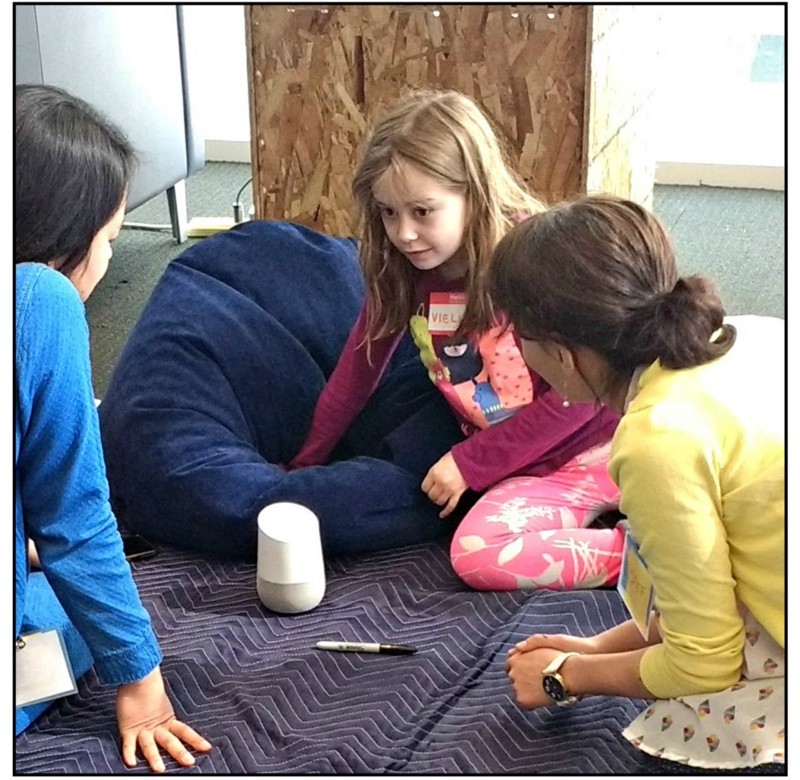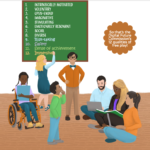I have a strong bias towards conversation as a practice. I believe conversation is at the heart of creating a mindful digital life—conversations with ourselves, with our loved ones, with our world.
You might recall the sentences above from my welcome emails. I write a lot about conversation…
More of us today are having conversations with our world in interactions with “voice assistants” or “intelligent agents”—Siri, Alexa, Cortana, Bixby, Google Assistant, to name a few. In this July, 2017 New York Times article, the writer Penelope Green tells us: “This year, over 25 million Americans will use an Alexa device at least once a month, according to eMarketer…[another] market research company has predicted that by the year 2021, there will be more Alexa-like digital assistants on the planet than humans.”
The Amazon Echo (Alexa) entered my home last year during the December gift-giving season. As an iPhone user for several years, Siri is in my life as well. If not already, I imagine you and your children may be inviting voice assistants into your home. They’re probably already in your car if you have one.
I’m going to crawl out onto a limb here and suggest that we might want to have conversations with each other about how we choose to interact with voice assistants in our environment. We’re early in this voice interaction domain. Designers have particular biases. For example, consider the difference between addressing Alexa, and addressing Google Assistant. To address Alexa, you basically give a command… “Alexa, play Astor Piazzolla.” To address Google Assistant, you begin with “Hey, Google…” or “OK, Google…” User experience designer Johna Paolino describes her experience when her boyfriend first purchased the Amazon Echo and the initial wow factor had worn off.
The product features continued working to their full effect, but I felt very unsettled. I found myself constantly agitated as I observed my boyfriend bark commands at this black cylinder.
Alexa, turn off the lights. Alexa, set my alarm for 8am.
This declarative speech was so incongruous with how he interacts with me, with how he interacts with any human.
Next Johna shares her experience unpacking her own Google Home and using Google Assistant:
Ok Google, play NPR news. Hey Google, set my alarm for 8am.
Why did these interactions suddenly feel so natural? They felt appropriate. In fact, I was delighted by my new Google Home…Alexa responds to her name only. Google’s product must be triggered with a ‘hey Google’ or ‘ok Google’. By requiring these introductory words as triggers, Google has forced an element of conversation. The experience difference here is huge!
I am not making a product recommendation here although it may look like it. I am saying if you or your kids are using voice assistants, make your interaction with them a part of your regular conversations about technology. Cultivate conversations that have you and your kids thinking like a user-experience designer. How do I feel when I use this myself? How do I feel when I hear you talking to Alexa (or Assistant, or Bixby, etc.)? What would make it a better experience for all of us? What if I’m enjoying the quiet and a family member starts talking to a voice assistant? Do we as a family want to specify some voice-assistant free times in the day or evening, or voice-assistant free spaces in our home? What happens to the data and do I care?
If your children are young, consider what they’re learning in their interactions with this early stage technology. Stefania Druga and Randi Williams are research assistants at the MIT Media Lab. They are studying how children’s interaction with technology that blurs the line between animate and inanimate objects affects their development. They’re looking at the rapidly emerging “Internet of Toys.” I recommend reading their blog post here. Watch the 2-minute video Kids, AI devices, and intelligent toys—seriously, you have time for that. It’s an amazing video. Thought-provoking.

As we both look to the future, we believe that researchers and device makers should pay more attention to how children interact with smart toys.
—Stefania Druga and Randi Williams
I’ll write more about smart toys in a post soon. There’s a lot to consider. Meanwhile, I wish you enlivening conversations.


